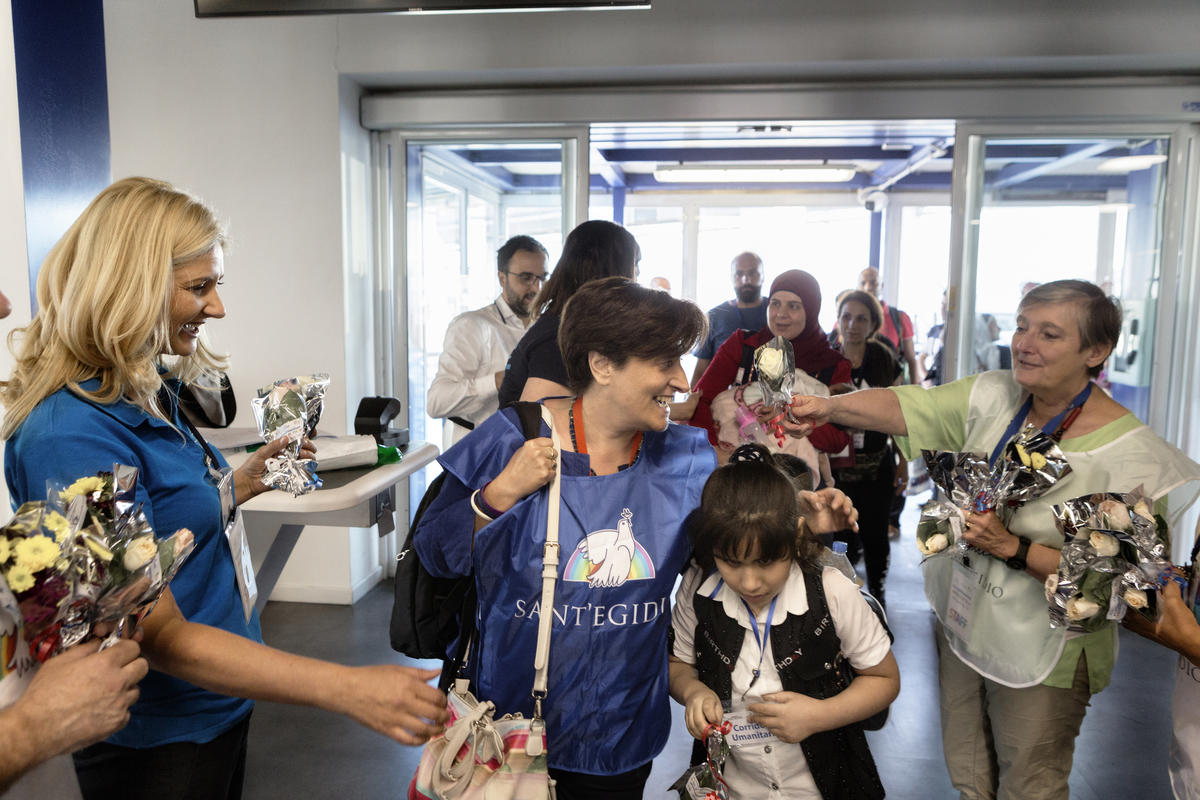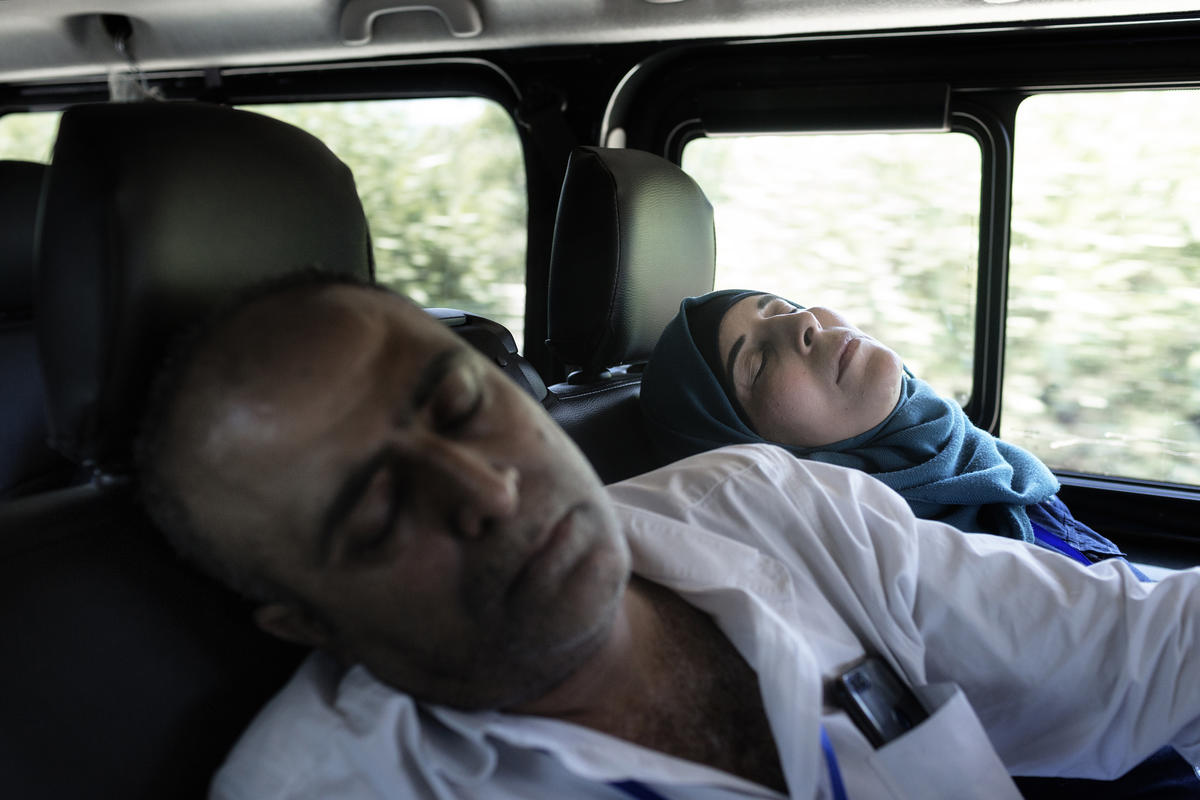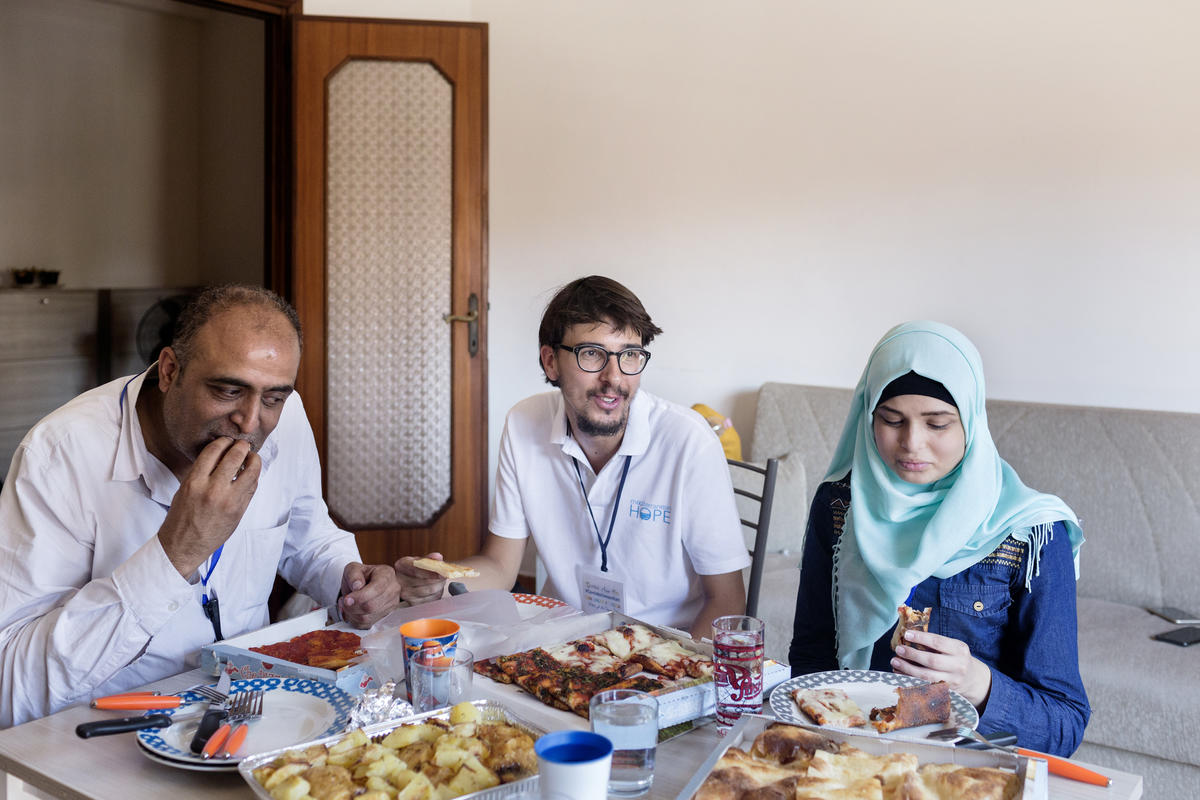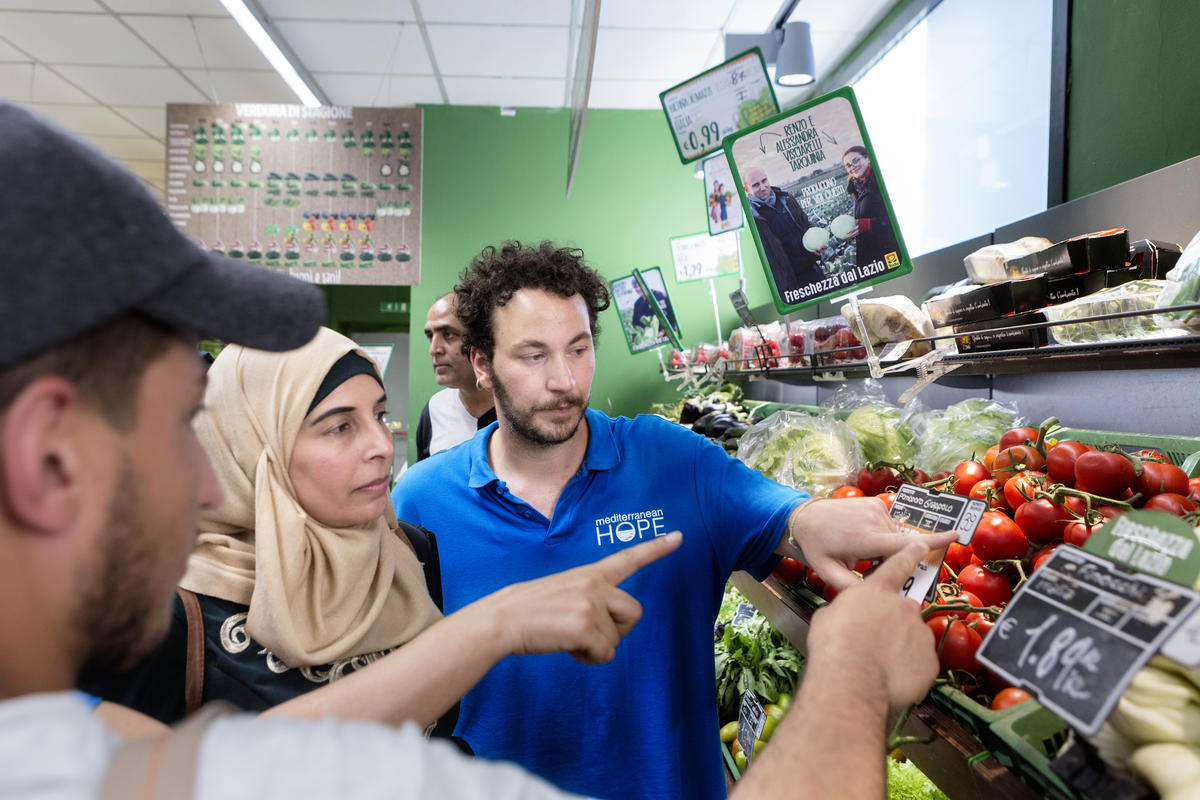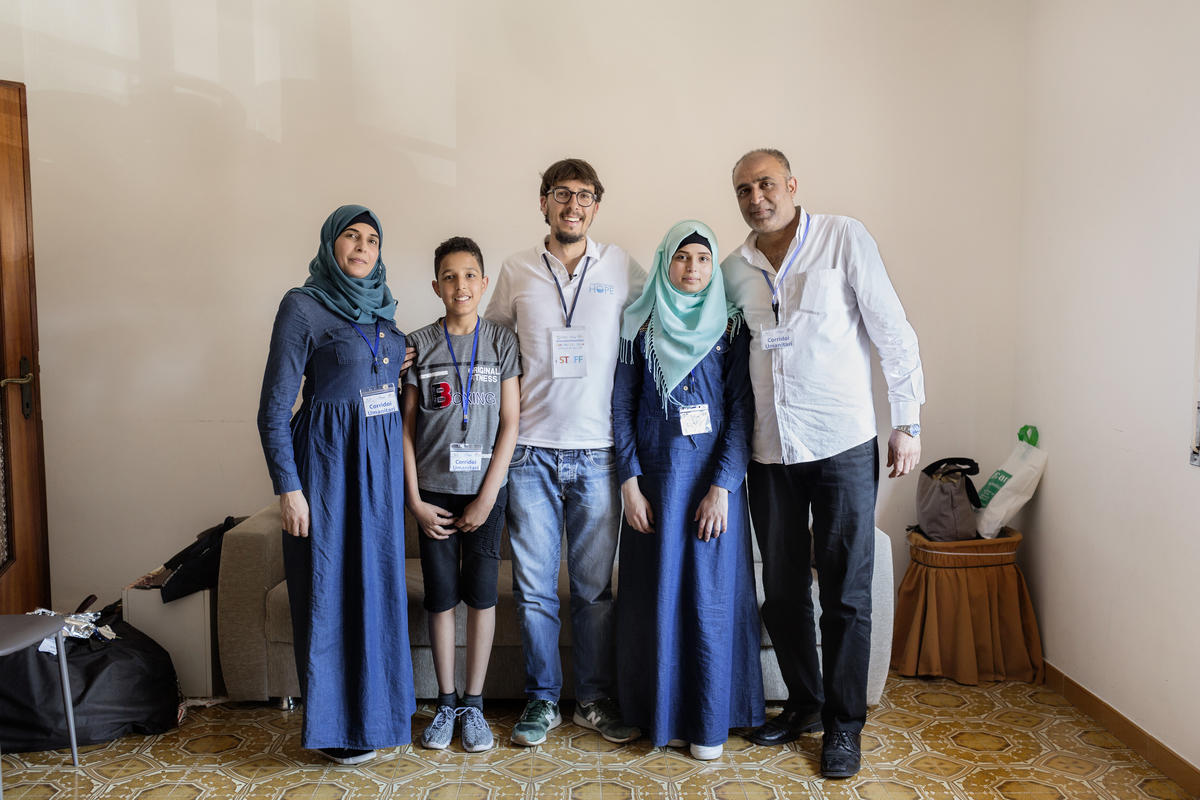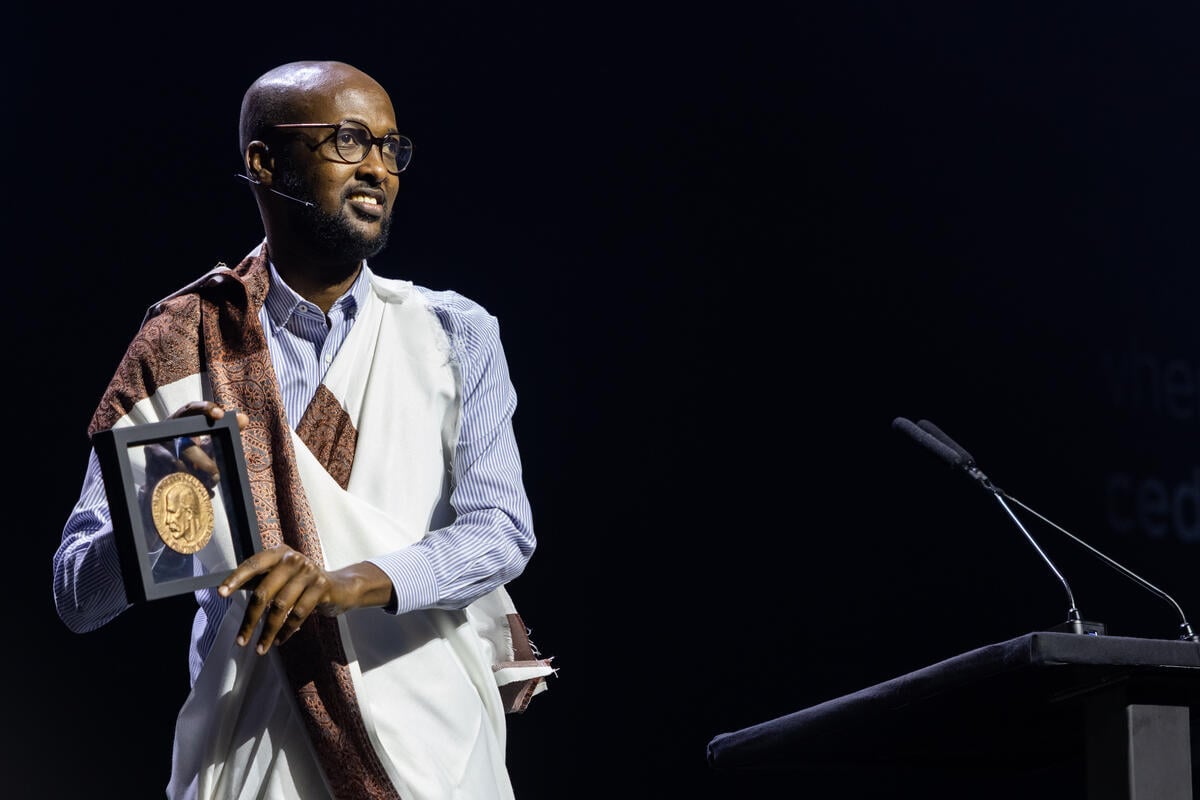Life-saving programme offers safe path to Italy for refugees
This was not just any arrival at Rome’s busy main airport. These 15 families have the chance to start a new life, thanks to a unique partnership called Humanitarian Corridors.
At first they looked nervous as they walked into the terminal building after the flight from Lebanon, unsure of how they would be received.
But a line of volunteers greeted them as they walked through the gate. They told the 77 refugees they were welcome - even saying the word “welcome” in Arabic. The volunteers regaled them with flowers and snacks and offered the children balloons. Soon the mood lightened.
“I was afraid before I arrived here,” said a woman soon after landing with her husband and their four-year-old boy. “I didn’t know people. Maybe they would be unfriendly …. When I came in (to the airport) and saw people smiling and the welcome, I was no longer afraid.”
In Italy the programme is facilitated by an agreement between a consortium of religious organizations, Sant’Egidio Community; Caritas Italiana, the Federation of Evangelical Churches in Italy (FCEI) and the Waldensian Table, together with the foreign and interior ministries. It has been expanded to several other European countries.
"When I saw people smiling and the welcome, I was no longer afraid.”
The programme was selected as the regional winner for Europe for UNHCR’s Nansen Refugee Award -- a prestigious annual prize that honours those who have gone to extraordinary lengths to support forcibly displaced and stateless people – for sponsoring refugees to resettle in Italy and start a new life.
In less than four years Humanitarian Corridors has brought more than 2,000 people to Italy and 350 more to France, in a legal way with a humanitarian visa in their hands. A recently signed agreement will allow 600 more refugees and other vulnerable people to travel from Jordan, Lebanon, Ethiopia and Niger.
On arrival, they apply for asylum and so far almost all have been granted international protection as refugees.
A growing number of extremely vulnerable refugees cannot either stay in their current host country or go home. They urgently need legal pathways allowing them to resettle in another country. This is why sponsorship programmes like Humanitarian Corridors are important because they provide a lifeline for those at greatest risk.
To help refugees to become self-supporting and integrate swiftly into Italian society, the organization offers a year of support including housing, legal aid and language classes. These are all paid for through its private funds.
“Through this programme we aimed to promote solidarity among people, sharing responsibilities with institutions. We strongly hope that safe pathways become the norm and no longer the exception,” said Oliviero Forti, head of Caritas Italiana’s migration policy and international protection office.
Simone Scotta, 33, is an Italian who works for FCEI in Beirut, where he helps select which of the Syrian refugees in Lebanon can participate in the programme. The decision is largely based on humanitarian need. He also accompanies each flight to Italy.
Some of the refugees have lost homes, others family members, some had been imprisoned and tortured, while others have serious medical problems, he said. Yet, for all the anguish of the past, Scotta said he found joy in enabling people to start new lives.
“The moment that makes me happiest is when the plane takes off. You know the things the refugees experienced in Syria and Lebanon. I think it’s fair that they are given a second chance,” said Scotta,
Typical is one Syrian family from Damascus. The father was shot in the chest. He and his wife fled to Lebanon, where their son – now four years old - was born. They were selected among the most vulnerable by FCEI and now they have a chance of a fresh start.
“It’s not easy to restart life at 43,” said the father, who asked that his real name not be used to protect his identity. “But these people (the organizations) gave me their trust. I have to repay that trust and be a good person in this new place,” he said, adding that he wanted to work in agriculture.
"We strongly hope that safe pathways becomes the norm."
Humanitarian Corridors has its origin in the sinking of a boat carrying refugees and migrants off the coast of the Italian island of Lampedusa on 3 October 2013. More than 300 people died. The wreck that shocked the country, in part because it happened close to shore.
“It was the point of no return. The whole community experienced this moment of shame. We had the idea of finding another mode of organizing things for refugees,” said Maria Quinto of Sant’Egidio.
While the programme currently covers just a fraction of those arriving overall as asylum-seekers, the organizations behind it are actively working to provide a safer alternative to dangerous sea crossings for an increasing number of people. The organizations behind it hope to see it extended to refugees in detention in Libya.
“I believe that you shouldn’t abolish the notion that you can come and seek asylum,” said Quinto. “What we can achieve is that we reduce that flow (of people coming by sea) by providing safe pathways.”
UNHCR’s Nansen Refugee Award is named in honour of Norwegian explorer and humanitarian Fridtjof Nansen, the first High Commissioner for Refugees, who was appointed by the League of Nations in 1921. It aims to showcase his values of perseverance and commitment in the face of adversity.
The overall winner of the award will be announced on 2 October and it will be presented by UNHCR, the UN Refugee Agency, at a ceremony in Geneva on 7 October.
You can read about the other regional winners of the UNHCR Nansen Refugee Award here.



